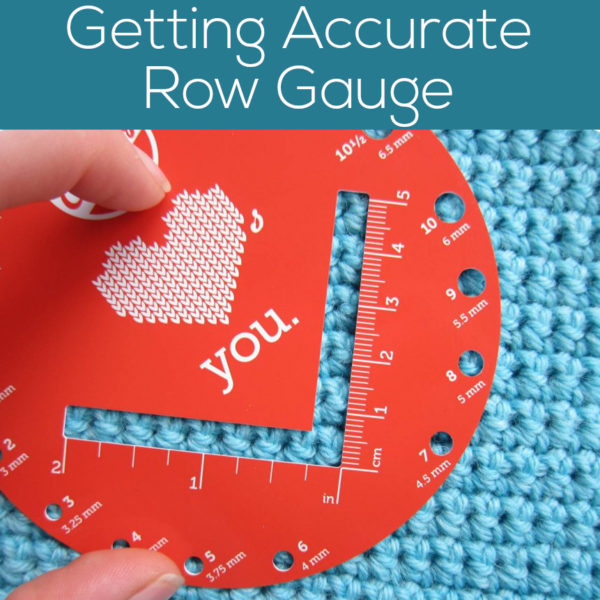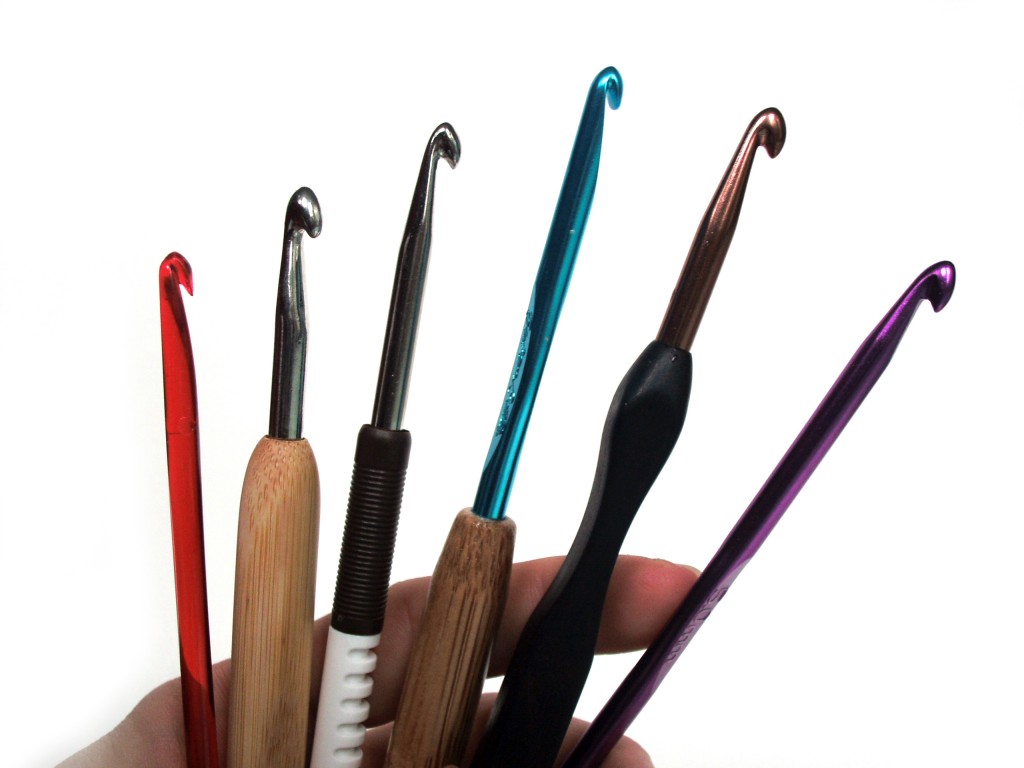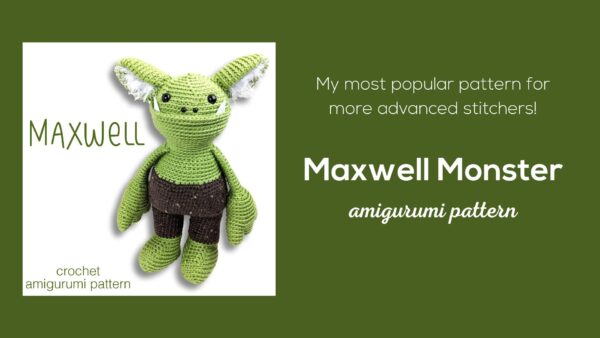
When you crochet amigurumi, accurate gauge isn’t super important. Your softie may end up a little bigger or smaller than the pattern says, but it’ll still work out just fine.
There’s a post here showing how to crochet giant amigurumi. You just make a huge change to the gauge by using thicker yarn and a bigger hook!
For clothing, accurate gauge is really important. You want the garment to fit!
Every knitting and crochet pattern specifies a gauge. Frequently written in terms of a square, it tells you how many stitches and rows you need to have in a certain number of inches.
Gauge is measured a little differently for items crocheted in the round. This post has more details.
But all too often, you get the right stitch gauge only to discover your row gauge is off. Or you match the row gauge, but now your stitch gauge is off. Argh!
What are you supposed to do?
Here are some tips that will (hopefully) keep you from pulling your hair out.
1: Be sure to follow the stitch instructions exactly
Are the gauge instructions in single crochet? Through both loops or just one?
Gauge swatches are frequently in single crochet/stockinette stitch, but not always! The designer will have you make a gauge swatch for the most important stitch pattern, so read carefully! You want to be sure to do your swatch in the specified pattern!
2: Is the swatch blocked or unblocked?
Gauge swatches may be blocked (that is, wet/stretched/dried) or straight off the needles. Be sure to do what the instructions say! Otherwise, your swatch may not be in the ideal dimensions.
Why does it make a difference? A particular yarn or stitch pattern may be likely to stretch more vertically than horizontally, for example. Blocking helps get the swatch into its ‘final configuration’ and may provide a more accurate measurement.
3: Change your needles
If you’re pretty close to reaching the right row gauge (but not quite!), try a different needle/hook material. The grippy-ness of bamboo or the slippery-ness of metal may be just what you need to get your gauge spot on.

4: Change your yarn
If you’re flexible about the type of yarn you’re using for your project, try a new yarn. The closer the yarn you’re using matches the yarn in the sample (in terms of fiber and ply), the closer gauge you’ll be able to achieve.
5: Accept your fate
Sometimes, it’s just not possible to match a designer’s exact gauge. For garments, aim to match the stitch gauge, and then take note in the difference between your row gauge and the pattern’s. You may be able to compensate by adding/removing a row or two as you work.

Here are handy links to all the crochet troubleshooting posts. . .
- How to Count the Number of Stitches in a Round of Crochet
- How to Hold Your Yarn for Crochet
- Am I Crocheting Inside Out?
- Help! Crocheting in the Back Loop Is Too Hard!
- What to Do If Your Foundation Chains Are Always Too Tight
- How to Work Small Pieces in the Round
- Tips for Crocheting Teeny Tiny Antennae
- How to Measure Gauge for Amigurumi
- Getting Accurate Row Gauge
- How to Clean Amigurumi
- Wrist Exercises for Knitters and Crocheters
Return to the main table of contents for Let’s Learn to Crochet Amigurumi.
Happy stitching!







Ok so what if the gauge info doesn’t say if it is blocked or not, do you assume it is not? So far I have largely worked with things where gauge is not important so I don’t bother checking it. But for garments that I have bookmarked this is what I see for a gauge:
1 pattern repeat = 5½ in. (14 cm). When you match the gauge in a pattern, your project will be the size specified in the pattern and the materials specified in the pattern will be sufficient. The needle or hook size called for in the pattern is based on what the designer used, but it is not unusual for gauge to vary from person to person. If it takes you fewer stitches and rows to make your swatch, try using a smaller size hook or needles; if more stitches and rows, try a larger size hook or needles.
I would guess that would be unblocked, and so far I have never seen a gauge guide say the piece should be blocked to see if you hit gauge.
That’s a great question! I would assume it is the blocked gauge, as it is the gauge for the finished project. Of course, blocking can alter the dimensions, so knowing how ‘hard’ to block something to get gauge is another tricky question!
For example, if you are using a yarn that grows considerably when you wash it, your finished sweater will be much bigger than you want if you take the unblocked gauge. Unless you never plan on washing your sweater ever. Which probably isn’t the case.
You can always feel free to contact the designer to ask!
If I would have to taken an exam on gauge-making, I would totally fail. 🙂
So thank you for your blog post, this was very useful to me. There’s some great tips in your post.
And I will become an gauge expert one day. 😉
All it takes is practice! You’ll get there 🙂
My question is, if I’m 10 rows into my swatch, and already my stitches are way too many, is it ok to start over before the total swatch size has been completed? I haven’t been able to find anything that says anything about this, and my common sense tells me yes, rip it, but also, it seems that although I have too many stitches per row, it looks like I’ll have too LITTLE rows. This is my first swatch, as I usually do amigurumi. I feel like maybe I’m just doing something wrong even though the stitch count is right and looks good.